This week we explore the role of microbes in drug development, food production and soil fertility. We investigate how bacteria such as Streptomyces are used and improved to make antibiotics, discover how gut microbes in cattle can be manipulated to increase growth and reduce environmental impact, and we visit the Chelsea flower show to learn how Rhizobia found in the roots of legumes could be used to improve crop growth and food availability. Also, in the news, how shift-work could affect your fertility, a new method of data storage using DNA, the key to growing the tastiest tomatoes and the world's biggest model Diamond. Plus we explore the micro-climates created by motorways in our Question of the Week!
In this episode
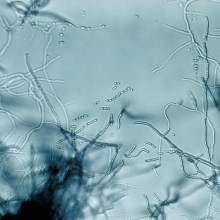
01:28 - Digging for Antibiotics
Digging for Antibiotics
with Paul Hoskisson, Strathclyde University
Paul - Well, there's been a lot of interest in why microbes make antibiotics, over a long period of time. The soil where they live is a very complicated environment and there are lots of competitor organisms there, so they have to compete with other bacteria, with fungi, with protozoa and also, higher organisms like nematodes. So, one of the ways that they can do this is by giving themselves a competitive advantage. So by producing compounds that can perhaps kill these competitors or signal to those competitors that they need to leave the area where there's a resource that they like to defend, and this is how Streptomyces and the related Actinomycete bacteria try and defend the nutrients that they live on. They are primary degraders of lots of dead leaves, and dead insect carapaces within the soil, so it's really about defending any available nutrients in the soil.
Sarah - And how do they actually go about making them? What's the process?
Paul - So, the process is incredibly complicated. In simple terms, they have large arrays of genes that we call biosynthetic clusters that you find within their genomes. They take primarily carbon and some nitrogen molecules and they assemble these into very complicated chemical structures which are made within the cells, and then they excrete them out into the environment to act on the competitor organisms. This can be over a range of chemical classes, some of them incredibly complicated and representing huge molecular masses.
Sarah - And I'm guessing, because they're so complicated that that's why we go looking for them in bacteria and we don't try and synthesise them ourselves in the lab.
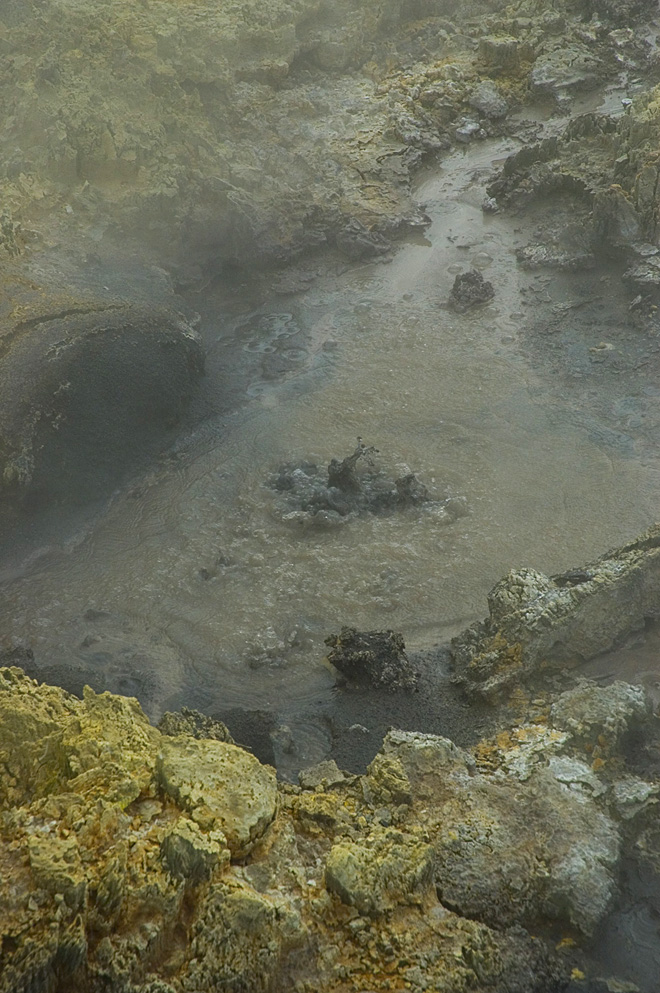 Paul - Yeah, absolutely. These chemical structures are often very difficult to make using synthetic organic chemistry and actually, over millions of years of evolution, these organisms have developed the chemistry and enzymes which can do these reactions very efficiently and very quickly. So, the pharmaceutical factories are already out there in the soil, so we may as well go find them.
Paul - Yeah, absolutely. These chemical structures are often very difficult to make using synthetic organic chemistry and actually, over millions of years of evolution, these organisms have developed the chemistry and enzymes which can do these reactions very efficiently and very quickly. So, the pharmaceutical factories are already out there in the soil, so we may as well go find them.
Sarah - I suppose also though they're not just producing these chemicals to sort of tell other microbes to get lost from their food source? They're also doing all kinds of other processes as well. How do we optimise it when we make these things, when we use these bacteria ourselves? How do we optimise it so that they are just making the chemicals that we want and not making all these other things that we don't necessarily find useful?
Paul - So, we've looked for many strains over, probably the last 60 or so years, and we often find a strain that makes one particular product very well, and that's easy to then transfer into liquid culture and scale up into big fermentations where the organisms secrete it into the media and then we can just harvest the media and purify the antibiotics from that. More recently, what's happened is, since we've been sequencing genomes of these organisms, we've actually found the genes to make lots of other compounds and there's a lot of interest now in how we can perhaps harness the power of those hidden clusters and activate them, and start to identify new antibiotics in that way.
Sarah - And if you're able to then use these genes in perhaps other microbes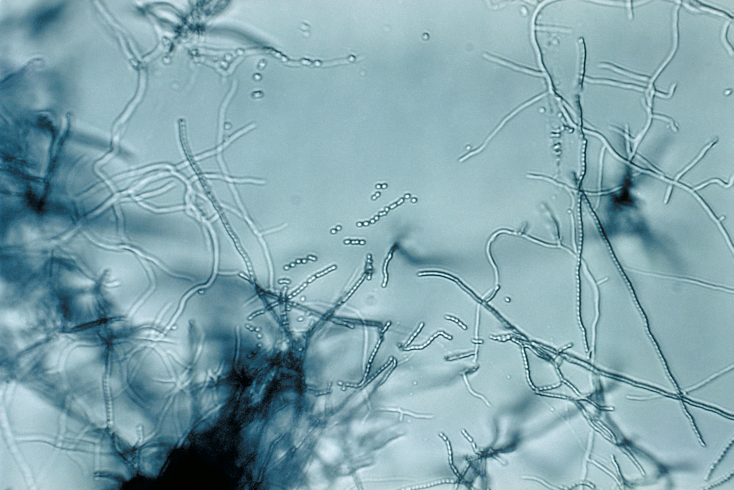 that are easier to culture, does that reduce the worry that you might also get contaminants going on in there as well?
that are easier to culture, does that reduce the worry that you might also get contaminants going on in there as well?
Paul - Well, I mean, these organisms are generally saprophytic organisms, they live on dead leaves and don't cause any pathogenecity so that the fermentations are incredibly safe and represent very little in terms of pathogenic threat. But often, they're very slow growing organisms because they live in the soil and resources are scarce. They don't need to grow quickly. So for example, everybody knows that an organism like Escherichia coli can double every 20 minutes or so under optimum lab conditions. For some of the Streptomyces, this may be in the region of 4 to 12 hours for the doubling time. So really, what we do is we try and move these biosynthetic clusters for antibiotics into strains so they grow a little bit quicker or can perhaps make more of that product.
Sarah - And could we just go out into our back gardens and dig up a trowel full of soil and it would have the type of useful Streptomyces bacteria that you're looking at?
Paul - Absolutely. The antibiotic Streptomycin which is very famous for being the first antibiotic active against Mycobacterium Tuberculosis - the organism that causes TB - is one of the commonest Streptomyces that you can isolate and you get maybe 10 million Streptomyces griseus spores in every gram of soil in virtually every environment we've looked in.
Sarah - So, have we found everything there is to find or is there still more out there, do you think?
Paul - There are lots of organisms still out there. There's a lot of interest now in exploring unusual niches such a hyper-arid soils from deserts such as the Atacama Desert, which is as an area of particular interest at the moment. But also looking in muds and silts at the bottom of the ocean, and lots of really good compounds have been found there recently with some having anti-cancer activities as well.
Sarah - One of the main worries with antibiotics is the problem of resistance. If these chemicals are already existing in soil and already interacting with other microbes, is there the danger that's there's already a level of resistance there that could spread to humans?
Paul - Well, resistance is a bit like taxes. It's inevitable. Because these organisms have been around for 400 million years, living in the soil, interacting with all the soil organisms, because they produce these compounds, they have to also be resistant to their own compounds. So many of antibiotic resistance genes that we see in the clinic probably have their origin in Streptomycete-like bacteria.
There's been some work from a lab in Canada recently by Jerry Wright where they've looked in caves that have never had any human activity in there and they still find antibiotic resistance genes out there that are still relevant in the clinic. So, resistance genes are out there and resistance will be inevitable. We need to keep looking and finding, and optimising antibiotics.
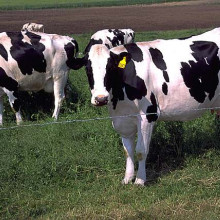
08:21 - Microbes and Muck - Making cattle eco-friendly
Microbes and Muck - Making cattle eco-friendly
with Jamie Newbold, Aberystwyth University
In western countries, the average person eats their own weight in meat every year, which means that livestock rearing makes a significant contribution to greenhouse gas emissions. This is partly because ruminant animals like cows release methane which is produced by the bacteria growing in their digestive tracts.
Aberystwyth University scientist Jamie Newbold has found that changes to farming practices can alter the microbes inside animals and that makes the animals much more efficient at growing and also much less environmentally unfriendly...
Jamie - The challenge we have is, as everybody knows, there is going to be 9 billion people by 2050, and we've got to find ways of feeding them. In many levels, that will be with better crop production, but we also have to remember that a lot of the land in this world is only suitable for growing grass. So, in the UK for instance, about 60% of our land is grassland. On the global level, it's maybe about 35-37%. So we've got to find ways of converting that into human edible food. Of course the way to do that is to use herbivores and particularly ruminants - cattle, sheep, goats - to convert things that aren't edible into things that are edible by in the form of meat and milk.
Chris - Good news for people who like meat like me, less good news for vegetarians perhaps, but what is the downside of doing that because it sounds like there's plenty of land, we just have more cows and sheep, and goats?
Jamie - I don't think I'm necessarily talking about more sheep and goats. We're talking about restructuring so that we don't compete with humans for human edible feed. When you feed cattle things that you and I can eat, they're relatively inefficient. Less than 65% of the energy transfers into the meat. However, when we feed cattle grass, things that we can't eat, the actual increase in the human edible protein is about 700%. So it's changing the way we use ruminant livestock. So they use food that we can't. Now the challenges in doing that are to make sure it's efficient and to make sure we minimise the environmental damage associated with cattle and sheep.
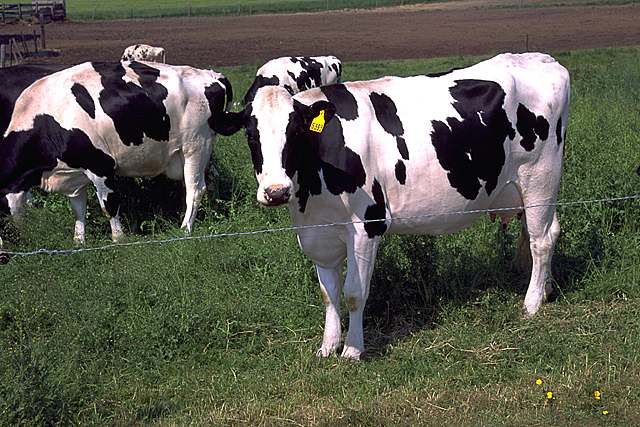 Chris - There are two challenges there. Let's take the first one first - the efficiency. From what you've just said though, it sounds like ruminant animals are already extremely efficient, so how can we improve on that?
Chris - There are two challenges there. Let's take the first one first - the efficiency. From what you've just said though, it sounds like ruminant animals are already extremely efficient, so how can we improve on that?
Jamie - Ruminants have a fascinating environment. Take the dairy cow for instance. You've got a rumen there that's about 100 metres big. About the size of a domestic dust bin, full of microbes, all actively degrading the food. What we need to do is make sure that that degradation is the most efficient so that we get the best transfer of the nutrients that are in the grass through the microbes and then into the animal.
Chris - And in order to make that process more efficient, we've got to tweak the microbes.
Jamie - Or we can tweak the forage. So what our own researchers do is try to understand how the microbes interact with the forage so that we can advice farmers on planting the right grass that then is fermenting the most efficiently in the rumen. And ultimately, trying to balance the forage with the microbes and of course, with the host because the other thing we know is that the animal itself has a large degree of control on the microbial population in the gut.
Chris - This is the sort of a pre-biotic effect, isn't it? It's in the same way that people will say, "If you eat a lot of porridge, you have beta-glucans in your diet and this promotes the growth of healthy or so-called 'good bacteria' in your intestine." You're talking about a similar sort of thing with what you feed into your ruminant animals.
Jamie - It's a very similar concept. It's about maximising the output and of course, as I said before, minimising the environmental issues.
Chris - Well since you've raised that, what about the fact that the microbes in cows at the moment are extremely bad for the world because they pump out huge amounts of methane? Can we do anything about that?
Jamie - Well, I think we can. I think it's probably the first point to make. It's 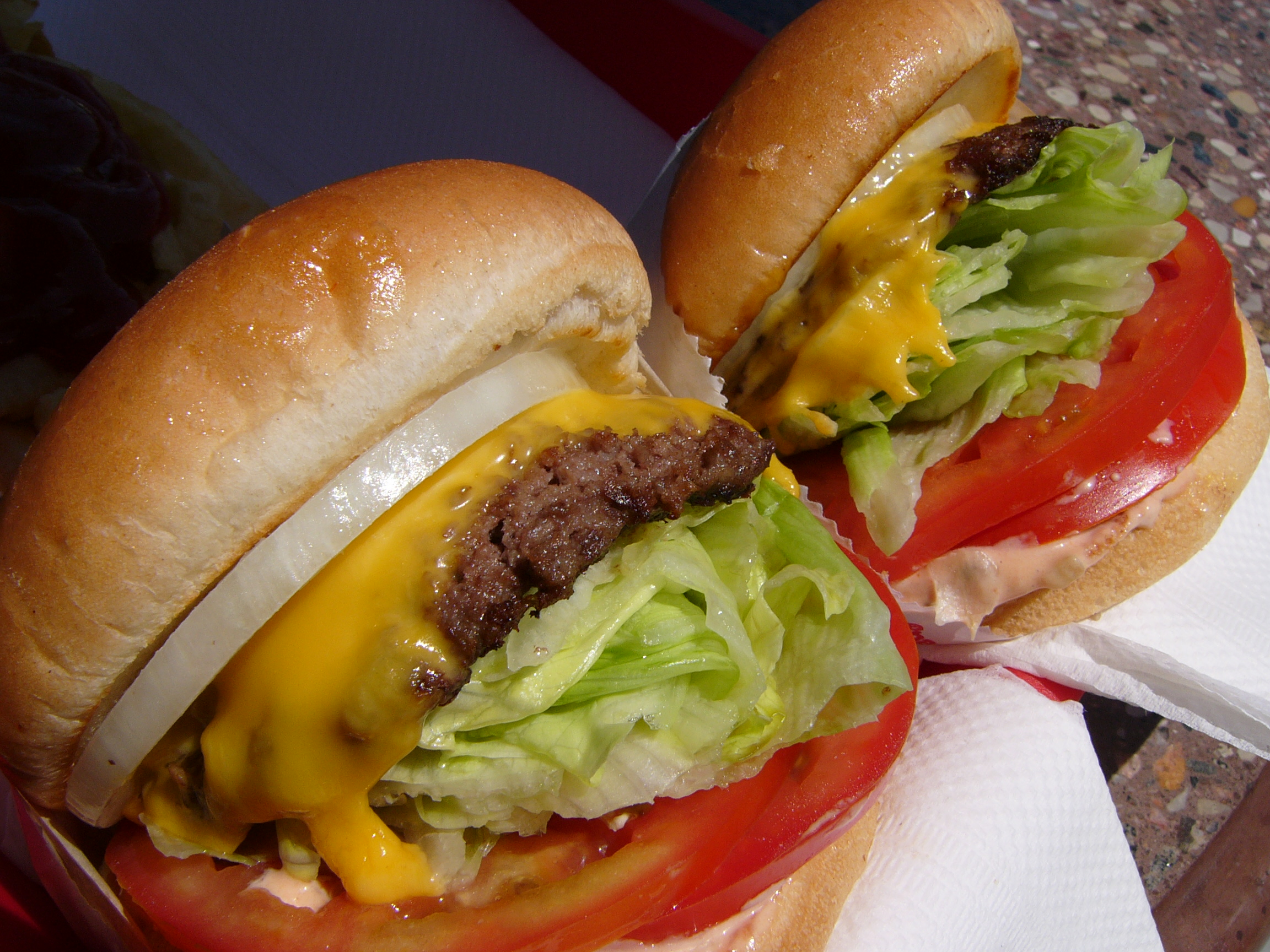 important to remember that it's this microbial population that produces methane and we can do a lot to reduce that. So for instance, we have worked using new grass varieties, that when we feed them to the animals, the animals grow quicker and we have 25% less methane. Colleagues in New Zealand are working on vaccines that you can vaccinate the animal with to destroy the methanogenic archaea in the rumen, and the animal produces less methane. And then most excitingly of all, there seems to be now good evidence that methane production by ruminants is actually a heritable trait and just in the same way that we breed for high milk production, we can probably breed for the animals that produce less methane. So I think we have nutritional, we have vaccination, and now, we have genetic methods.
important to remember that it's this microbial population that produces methane and we can do a lot to reduce that. So for instance, we have worked using new grass varieties, that when we feed them to the animals, the animals grow quicker and we have 25% less methane. Colleagues in New Zealand are working on vaccines that you can vaccinate the animal with to destroy the methanogenic archaea in the rumen, and the animal produces less methane. And then most excitingly of all, there seems to be now good evidence that methane production by ruminants is actually a heritable trait and just in the same way that we breed for high milk production, we can probably breed for the animals that produce less methane. So I think we have nutritional, we have vaccination, and now, we have genetic methods.
Chris - Just to return to the point you were making about getting rid of the methanogens, the bacteria that make the methane in the guts of the animals, is one not necessary to have the other? In the sense that it's interesting how this is such a ubiquitous trait in these animals, they produce huge amounts of methane. Is it not necessary for them to grow as efficiently as they do to taste as tasty as they do when you send them to the abattoir and then turn them into a burger? Are we not going to end up, if we lose those microbes with a less efficient animal in the long run?
Jamie - Now you may have thought that would be so, but there have been proof of concept studies done where we have used chloroform and chloroform is a direct analogue of methane. And although chloroform clearly is not a practical feed additive, when you add chloroform to the rumen, you switch off methane production and I, and others, also done trials now showing that when you do that, you can raise methane-free animals and they grow perfectly well, and the products you get out are the same. So, surprisingly, it seems this is an avoidable problem.
Chris - Well let's put some numbers on this then. So, what sort of impact do you think that this sort of work could have on the amount of energy that we can supply the human race with? Are we looking at a food sustainability problem if we implement this? And also, what about the environmental impact? What sort of a dent in methane and therefore, indirectly carbon equivalents, can we make with this?
Jamie - Okay, so to try and bring that out, food security, let's be clear, this is only part of the problem. We need, as everybody knows, to reduce the amount of red meat that rich western diets contain. So, I'm not advocating a high meat diet. I'm advocating red meat as part of a balanced diet. So it's only part of the solution to the problem of food security. Environmentally, just to give you some ballpark figures, the average daily cow produces about 30 litres of methane for every kg of dry matter it eats. Our estimates suggest that if we could get farmers to manage their animals better, then if the worst farmers farmed as well with the middle farmers, we might have a 15 to 20% reduction. If everybody farmed as well with the best farmers, there might be another 10%. So there's a lot we can do just by advising farmers. In terms of additives, there's no magic bullet on the horizon but there are certainly plenty of solutions that will make further reductions in the region of 20 to 25%. So, we can make a real difference to the impact of the greenhouse gasses from ruminants.
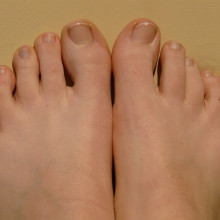
Why is athlete's foot only found in feet?
Chris - Microbes have their own niche. There are certain places on the body where they like to be- they're optimised to grow in those places. Feet are wonderful. They have dead skin which serves as protein, lots of sweat, and it's warm, and it's protected, and it's easy to spread around because you have to put your feet on the ground when you walk about.

16:58 - Fertile findings from pregnancy and shiftwork study
Fertile findings from pregnancy and shiftwork study
A shiftwork-dominated lifestyle ruled by the clock could significantly affect fertility, new research has revealed.
 By jetlagging pregnant mice, Northwestern University scientist Fred Turek and his team found that, compared with controls, rodents subjected to regular shifts in their sleep-wake cycle, simulating a human doing bouts of nightwork, suffered a 40% birth-rate drop.
By jetlagging pregnant mice, Northwestern University scientist Fred Turek and his team found that, compared with controls, rodents subjected to regular shifts in their sleep-wake cycle, simulating a human doing bouts of nightwork, suffered a 40% birth-rate drop.
The work, published this week in PLoS One, also compared moving the body clocks of the mice backwards as well as forwards, finding that advancing the clock (leaving the animals short of sleep) had roughly twice the pregnancy impact of retarding the clock.
The researchers also highlight recent findings that the pregnant uterus as well as foetal tissues sync up their own internal chemical clocks with the body's main master clock, the suprechiasmatic nucleus based in the brain.
Disturbance to the circadian rhythm, they speculate, is therefore likely to also impact on the biochemistry of the uterus and foetus, increasing the risk of adverse outcomes. This, they say, warrants closer scrutiny in human subjects, particularly since there are now reports of individuals struggling to fall pregnant when subject to work patterns requiring regular reorganisation of the body clock.

19:49 - A new DNA-based memory chip
A new DNA-based memory chip
Researchers have developed a DNA-based memory chip for storing information inside cells...
It could be used to record data in a living cell, without using silicon chips like we do in computers. This could allow us to track cell divisions to study cell processes like development, ageing and the changes that occur in cancer.
DNA is directional, and now a team, led by Jerome Bonnet at Stanford University have found a way to encode information using enzymes that can flip small pieces of DNA between their normal direction, which acts as a 0, and the opposite direction, which acts like a 1. This means it can store one bit of data. And the process used is reliable enough to write and rewrite information again and again.
The researchers found that by using an enzyme called integrase, borrowed from a type of virus called a bacteriophage that attacks bacteria, they were able to chop out a small section of DNA, flip it over and stitch it back into the main DNA strand, changing its direction and therefore 'setting' the switch to 1 rather than 0.
Then by applying integrase again, this time along with another enzyme called excisionase, they were able to cut the DNA section out, flip it back to its original orientation, and stitch it back in again, 'resetting' it to 0.
It's then possible to read the data from the memory chip using different coloured proteins. When the DNA is in the 0 configuration, the green fluorescent protein or GFP gene is switched on, which makes the cell glow green. And when it's in the 1 configuration, RFP (red fluorescent protein) is produced, making the cell glow red.
This could be used to show when a cell had undergone a particular number of cell divisions, or if a particular gene had been switched on.
The enzymes used are both members of a group called recombinases, and the team have dubbed their data storage system the recombinase addressable data module, or RAD for short.
It's taken the group 3 years and 750 tries of combinations to get the RAD module right. One area where they had trouble was in finding the right balance between integrase and excisionase expression, to stop the DNA from being flipped between the two states without regulation. Eventually, they were able to engineer controllers for the 'reset' switch, to keep the flipping of the DNA regulated.
The next step for this way of storing data is not to work out how to increase the power up to a terabyte to find a new type of computer, but to get up to around 8 bits, or a byte. Drew Endy, one of the team working on this RAD system believes that the real power of it is that it can be used where silicon can't - inside living cells.
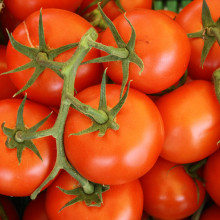
22:49 - Perfecting the Tastiest Tomato
Perfecting the Tastiest Tomato
with Professor Harry Klee, Florida University
Now, to combat widespread public dissatisfaction with 'supermarket-perfect' tomatoes like mine - in other words, ones that look great but are deceptively bland and tasteless when you eat them - scientists have tracked down and published the cocktail of chemicals that need to be there to constitute a much more flavoursome fruit. Professor Harry Klee, from the University of Florida, explained to Chris Smith that it was his own displeasure at the inferiority of shop-bought tomatoes that motivated him to embark on the search for the perfect tomato...
Harry - If you're of a certain generation and you've grown your own tomatoes, or had access to them, you realise that some of them taste great and then you go to the store and they taste incredibly bland, and it's clearly a huge problem. It's the number one complaint in the US of consumers with regard to produce and so, yeah, it was a daunting task, but one that just cried out to be done.
Chris - So how did you approach this? Did you say, "well, the ones that are in the supermarket have been bred that way. Let's look upstream of that, at the ones that they came from, and see if we can put some of the flavours back?" How did you approach it?
Harry - Yeah, that's precisely it. Breeders over the years have worked very hard to give customers what they want. Unfortunately, their customers, or the growers just want more and more yield, and the growers are not paid for producing objects that taste good. So basically, the breeders have, through selection over the last 50 or more years picked out varieties that have really high yields but have absolutely no taste. And so, if you go back to the pre-intensive breeding periods you have what in the US we call "heirloom" tomatoes - varieties that have been around for a hundred years or more which have fabulous taste. They're not very farmer friendly. You get very poor yields, they're very susceptible to diseases, but they taste great. So you know that out there, there's a massive reservoir of really good tasting material and so, the trick was in our case, to go back to that material that preceded the intensive breeding, and understand what is good flavour.
Chris - How did you do that? Did you literally put samples of these hundred plus species of heirloom tomatoes in front of tasters and say what's good, what's bad?
Harry - That's exactly what we did. We're now up to about a couple of hundred different varieties that have vastly different chemical profiles and vastly different tastes. Some of them are outstanding, some of them really aren't very good, and you wonder why people grew them in the first place. But that incredible diversity that's out there gave us this opportunity to do a big test where we could take upwards of a hundred of more varieties.
Basically, we gave them to a large consumer panel and said, "What do you think of them?" And then we took samples of those and ground them up, and determined what chemicals related to flavour were in each of them and basically, you can take all of that massive amount of data of chemistry and consumer preferences, and through statistics, you can extract out what's in the good ones and what's in the bad ones. And in theory, you can put together a recipe for the ideal tomato.
Chris - So, you screen them across all these people, you see trends emerging where certain combinations of chemicals appear to associate with people saying, "This is very nice. It tastes very nice. It's nice and sweet. That's what I like." Other chemicals seem to be less important. You hone in on what those chemicals are. Do you now know then exactly what constitutes the ideal tomato in terms of its chemistry?
Harry - The simple answer is yes. The more complex answer is, there are still differences with people in terms of what individuals like. And so, the way I like to describe it is to say, we can optimise for the chemical composition of a great tasting tomato. It won't necessarily be everybody's favourite, but I think everyone would say it's right up there with the very best. Certain individuals might like something that's a little sweeter. Some individuals like some that's a little more acidity to them, but by and large, yes, we can extract out the recipe for a great tasting tomato.
Chris - And would the idea be then that you can now rationally breed strains of tomatoes, going back to those heirloom strains and selecting out chemically the ones that have the right biochemical proportions of these chemicals, breed from those and then slowly, arrive at one that does have good shelf life in 'supermarket-friendly' characteristics but also, blends in a lot of these other important flavourants?
Harry - Yeah, that's exactly the approach. I mean, unfortunately, until a large commercial grower is paid to produce something that tastes really good, we have to work within those constraints at the commercial level. We have to have a tomato that really does produce high yield, and really is resistant to all the diseases the farmer encounters. But by going back and knowing the specific chemistry of what is great tasting, and we know that the genetics is there within the heirloom populations, we just have to go back and recapture it and that's going to take time because of those constraints of yield and disease, and shelf life, but I think we know how to do it. We basically have provided the road map for what genetics we need to combine to get the product that tastes good.
Chris - So ironic that modern day breeding gave us something we don't like and we're now having to go back to what people have done originally to put it right. But tell us then what are the important chemicals you found that constitute the perfect tomato and were there any surprises?
Harry - Yes, there were. I mean, number one is sugar. We know that people, through genetics over eons, have been selected for picking out things that have lots of calories. So sugar is really the number one, but beyond the sugar, you very quickly get compounds which are the smell components, the volatile chemicals that we smell, and there are a few of those that are really important. They're actually the chemicals that are related to the same compounds that give the fruit colour - from the carotenoids. There are carotenoid breakdown products that are very, very strong contributors to flavour and they really make a huge difference in terms of preferences.
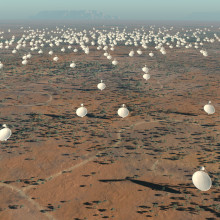
30:24 - The Square Kilometre Array
The Square Kilometre Array
with Bernie Fanaroff
This week, the decision was finally made about where the most powerful telescope has ever been conceived will be built starting in 2015.
Australia and South Africa have both submitted rival bits to host the
Square Kilometre Array, the SKA, this is a multi-billion pound network of over 3,000 radio dishes that will enable scientists to see further into the universe's history than we've ever seen before. This week though at a meeting in the Netherlands, it was decided that rather than award it to just one, both countries would end up hosting parts of the telescope. Bernie Fanaroff is the Director of the South African bid and he was at that meeting.
Bernie - We're very happy indeed. We would obviously have liked to have the entire SKA in Africa, but once the Square Kilometre Array site advisory committee recommended Southern Africa as the signal site, it became clear that many of the members of the SKA organisation wanted to keep Australia in the project and asked for a small team of scientists to see whether there were any ways in which parts of the telescope could be built in both continents which would be both viable in respect of costs, and would not detract from the science. So they came back with some options and at the meeting yesterday in Amsterdam, the SKA organisations board took a decision that the low frequency array, what's called 'sparse array', would be built in 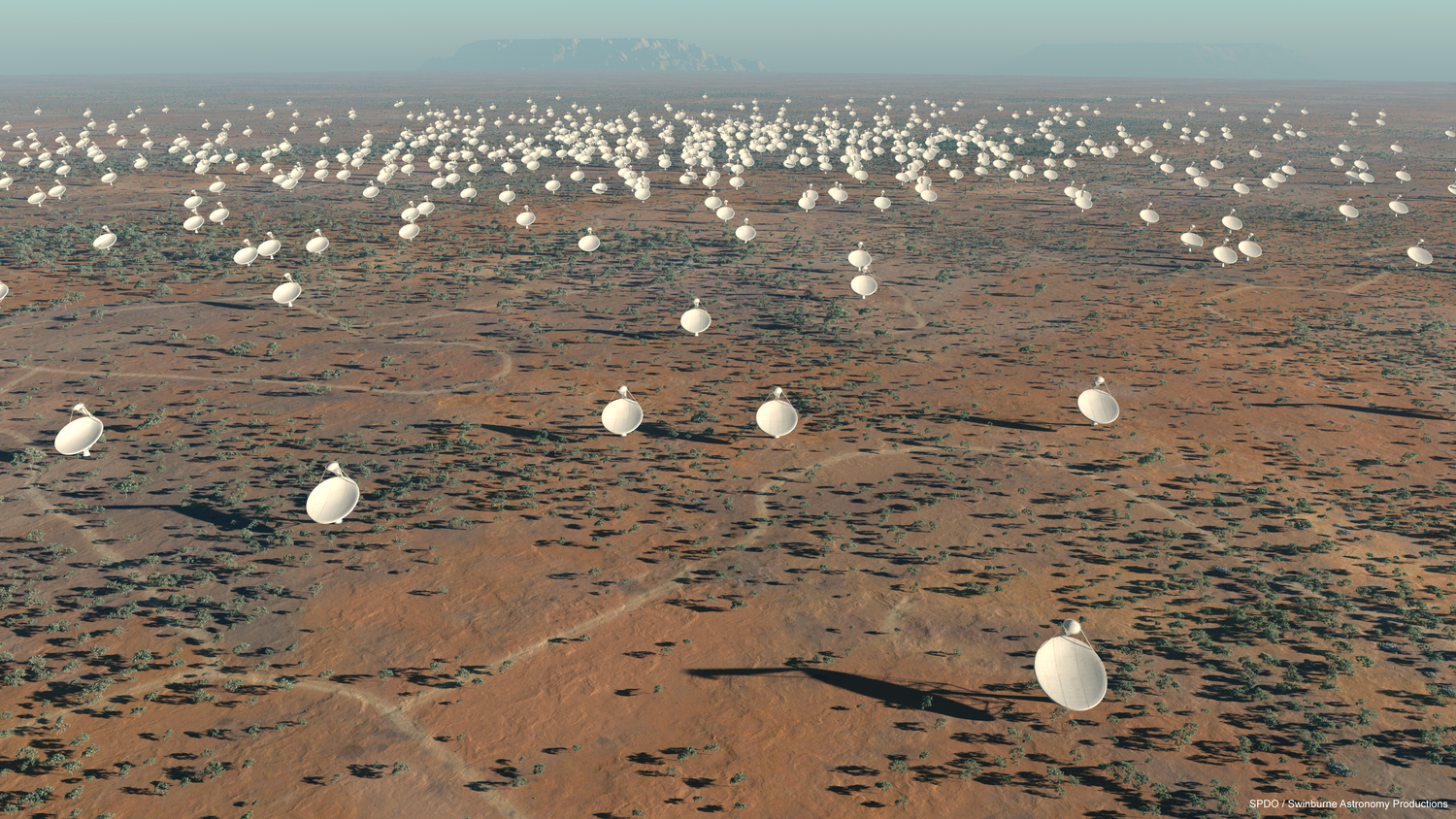
' alt='Artist's impression of the 5km diameter central core of SKA antennas.' >Australia and the dishes, and the aperture array would be built in Africa.
Chris - And spreading the telescope out not just across two countries but two continents, there's an ocean in the middle, does that in any way alter the way in which the project has to be operated or does actually spreading them out in this way strengthen things?
Bernie - In the first stage, it will allow us to do more science for pretty much the same amount of money. In the second phase, we still have to go through a very intensive period of system engineering, and technology down selection and so on before we can make accurate estimates of the cost, but I don't expect the cost of operating the two sites to be restrictive. As far as the science is concerned, what we'll do is analyse the data from each of the three arrays, pretty much at the site themselves. So, what will be transmitted to science centres around the world is already concentrated down by the high performance computing centres.
Chris - The fact that this is coming to South Africa, it could not have done, it could've ended in Australia, what does this mean to southern Africa?
Bernie - Well, I think first of all it's a recognition that southern Africa can do it. I don't think that a lot of people would've seen South Africa and Africa as a possible centre for high tech and leading mega science. So, it's really a way of changing the world's perception of what we can do and also of course, it changes our own perception of what we can do. We've already seen that a lot of enthusiasm over the meerkat, lots of young people coming into science and engineering, over 400 growing since 2005, young people from all over Africa, and we've seen a lot of very, very good young researchers coming from Europe and North America, and other places to work in South Africa. So, we expect that'll increase. Hopefully, what we'll be able to do is to reverse the brain drain.

34:32 - Private Space Missions, Atlantic Swims and Jubilee Diamonds
Private Space Missions, Atlantic Swims and Jubilee Diamonds
with Charles Bolden, NASA; Ben Fogle; Peter Furness, Royal College of Pathologists, Graeme Jones, University of Keele
Space X Launch
The first cargo delivery to the International Space Station by a private company was successfully launched this week by California-based Company 
Space-X.
The Falcon 9 rocket took off from NASA's Cape Canaveral air force station in Florida on Tuesday 22nd May carrying the Dragon capsule containing non-essential supplies of meal packets, a laptop, clothes and some student experiments, which rendezvoused with the space station on Friday.
The successful return of Dragon back to Earth once it undocks at the end of the month will lead to an official contract for the company to fly 12 cargo missions to the space station.
NASA's Charles Bolden comments.
Charles - The significance of this day cannot be overstated. A private company has launched a spacecraft to the international space station. We're now back on the brink of a new future. A future that embraces the innovation the private sector brings to the table, and a future that opens up the skies to endless possibilities. Congratulations to the SpaceX and NASA teams, and Godspeed Dragon.
---
Using the Human Body to Monitor Ocean Pollution
British adventurer Ben Fogle announced plans this week to take to the
Atlantic to swim over 3000 miles from North America to Cornwall in summer 2013.
As part of the expedition, Fogle will become a human research vessel carrying micro-sensors on his body to monitor marine temperatures, dissolved gases and algae in the thin surface layer of the ocean as he swims providing researchers at the National Oceanography Centre in Southampton with a greater insight into the air/sea interface and the general state of the ocean...
Ben Fogle. - There's all sorts of exciting possibilities to use technology, to use me. I'm going to be out there doing this ridiculous challenge that's going to be hard enough anyway and the more useful it can be to people, the more of a drive it will be for me to keep on going. To date, everyone has felt that our oceans are unpollutable. Well, that's not true. The net results of all that pollution and the overfishing, it's a cyclical effect that will have catastrophic effects in the long term. I think the more people that can just raise awareness of what we're doing, the better it will be for all of us.
---
Using Plants to Relieve Allergies
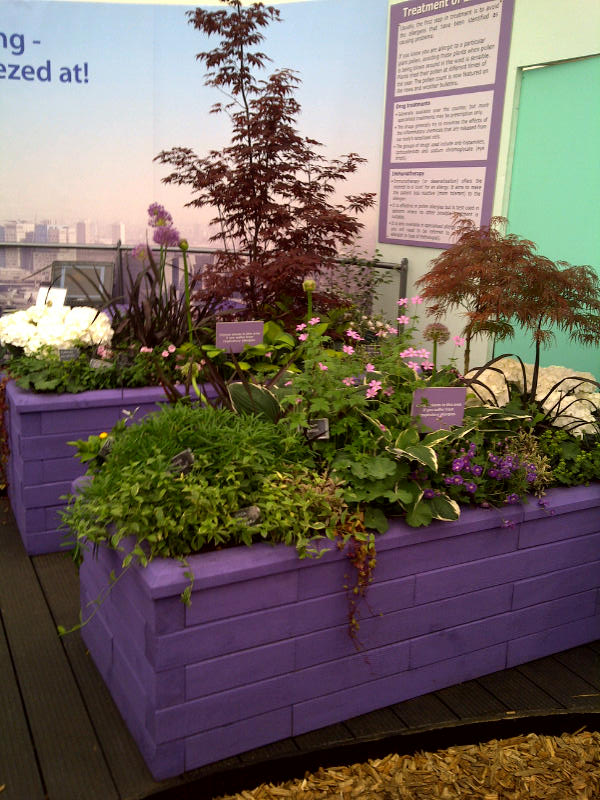 Urban gardens designed to prevent allergy flare-ups in hay fever sufferers have been displayed at the
Urban gardens designed to prevent allergy flare-ups in hay fever sufferers have been displayed at the
Chelsea flower Show in London this week.
The exhibit, hosted by the
Royal College of Pathologists, displayed two rooftop gardens similar in appearance but with one containing pollinating plants such as lavender and ferns that trigger hay fever and the other sterilised or insect-pollinating plants such as hydrangeas or Japanese Maple.
The exhibit raised awareness of the allergies such as hay fever, which affects 20 to 30% of the UK population, as gardens in densely populated, urban environments become more popular.
Peter Furness is former is the college's former president...
Peter - Greening the urban environment is fantastic, but if you're going to do that, it's probably a good idea to be aware of the consequences you could have on the health of all the people living nearby and respiratory allergies are a growing problem. You can have a beautiful garden with, or without, respiratory allergies depending on whether that's a problem for you. There's quite a few people producing vertical green walls, it seems to be quite fashionable, and we've had them coming around saying, we need to think about this. We're putting these green walls of plants really in your face in an urban environment, and they need to realise it might be a problem.
---
The Jubilee Diamond
And finally, the
largest model of Diamondin the world is being built by scientists at the University of Keele, in celebration of the Queen's Jubilee.
Standing at 2m in height and 1.8 metres in width, the octahedral structure uses 35,990 transparent balls representing the carbon atoms that make up diamond held together by over 70,000 sticks acting as the covalent bonds between them.
The model will be unveiled just in time for the Jubilee in the central marketplace of the town of Uttoxeter in the UK.
Graeme Jones is leading the project.
Graeme - So we're going to build the largest model of diamond in the world and we wanted to get a Guinness World Record, and that's forced us to go to this humongous size. So we've been working with lots of schools around the local area and local people in the town centre, putting the model together. It should hopefully be unveiled on the 2nd of June.
So look out for the Diamond if you pass through the town of
Uttoxeterduring the jubilee weekend.
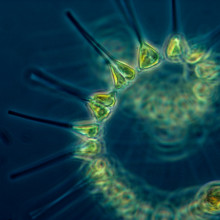
39:40 - Microscopic Plankton - Planet Earth Online
Microscopic Plankton - Planet Earth Online
with Katy Owen, University of East Anglia
Katy Owen - Phytoplankton - you have to think of them a little bit like the grass of the sea, they're tiny microscopic plants, thinner in diameter than a strand of human hair and you find them everywhere in seas and oceans around the world, hot, cold water, they're tiny little powerhouses, they photosynthesise and in doing so remove carbon dioxide from the atmosphere and convert it into a organic carbon as part of their bodies.
Richard Hollingham - Okay, let's get a bit closer to the water. We're not going to be able to see them, presumably, are we?
Katy Owen - No, they're very small in diameter, really, really thin. Thinner than a sheet of cling film.
Richard Hollingham - Let me just get a handful of water. So, I've got a handful of water and wet feet! How many plankton are there in there? Is that really just full of plankton?
Katy Owen - Absolutely teaming and you can have as many as 20,000 individual cells in just a millilitre of water, so huge quantities in a very small amount of volume.
Richard Hollingham - You're interested in this not just because it's important because of the food chain but its role in the global climate?
Katy Owen - Exactly right. Because they photosynthesise it's really key. They remove this carbon dioxide from the atmosphere and they take it out of circulation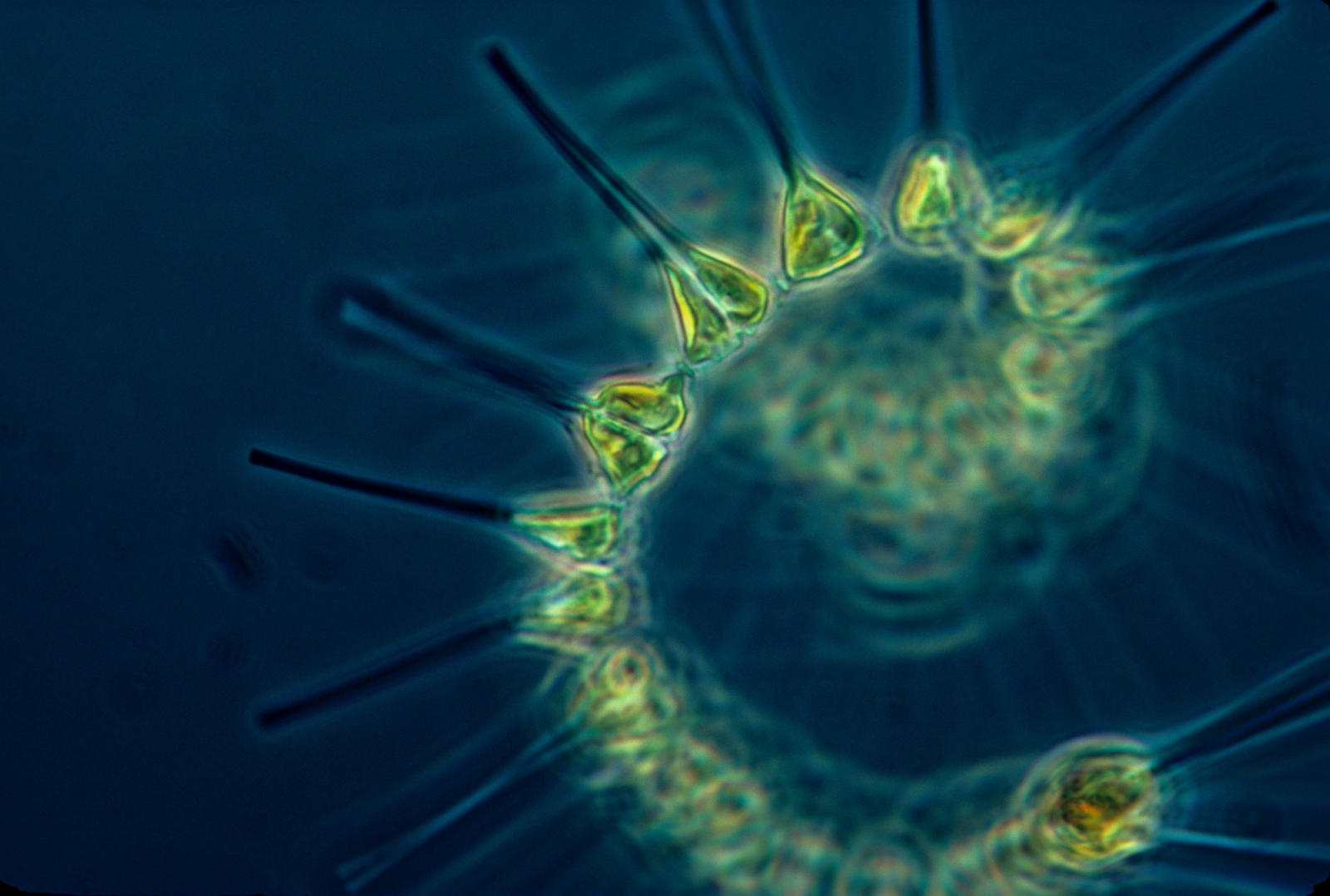 and they incorporate it into their bodies and then as they die or are eaten by something else in the food web that carbon is recycled or it is taken to the deep ocean so it's out of the way, it's removed, so it's a really good way of reducing carbon dioxide levels in the atmosphere.
and they incorporate it into their bodies and then as they die or are eaten by something else in the food web that carbon is recycled or it is taken to the deep ocean so it's out of the way, it's removed, so it's a really good way of reducing carbon dioxide levels in the atmosphere.
Richard Hollingham - So what are you doing.
Katy Owen - I use a machine called a flow cytometer which is borrowed from Biomedical Research, normally it's used to scan blood cells but I am applying it to marine science and using it to count these phytoplankton.
Richard Hollingham - Well let's get out of the wind here to your laboratory which is up there on the cliff.
Katy Owen - Sure why not.
Richard Hollingham - Well here we are in the molecular biology laboratory at CEFAS.
Katy Owen - The Centre of Environment, Fisheries and Aquaculture Science.
Richard Hollingham - And you have, rather helpfully, some flasks of phytoplankton and this looks completely green and this is, presumably, very concentrated.
Katy Owen - This is a very concentrated culture. These are some cells that grow here in the lab just for testing purposes and you can see how dense that is and you normally you wouldn't get that concentration in a natural sample. Here's one that I collected from the North Sea last week and you can see that it is more of that typical North Sea colour, brown.
Richard Hollingham - And next to them on the laboratory bench is this curious looking machine - it's about the size of a beer barrel I suppose but with the outside exposed and it's full of circuit boards and tubes. It does look almost like a device out of a science fiction film.
Katy Owen - It looks horrible, it looks really horribly complicated but it's actually quite a simple principle. It's a machine we use as a pump and we pump water, a stream of water, a stream of sea water, through the path of a laser beam and as the laser beam hits anything in that seawater such as debris or, hopefully, phytoplankton cells that laser light is scattered and we collect that information which gives us a lot of details on the size and the shape and the structure and also the pigment content of the phytoplankton cells.
Richard Hollingham - So individual phytoplankton. So you can count them but you can also see the size and shape of them.
Katy Owen - We have a whole lab which is dedicated to counting phytoplankton cells by light microscope but the problem with that is that is only covers a very small range of sizes things that we call the nano and the net plankton which are from 20 to 200 microns, but there is a real whole wealth of phytoplankton below that size range something called the picoplankton which are less than 3 microns so we're talking a fraction of the size of a human hair follicle and you can't see them with a light microscope and they're just too small to be counted or identified accurately, so this machine is not only capable of measuring them we can also approximately identify them and do thousounds of these cells within a few minutes.
Richard Hollingham - So is phytoplankton something we should all learn to appreciate a lot more?
Katy Owen - Definitely. I find them fascinating but I'm probably slightly biased but I find it amazing that things that are so small and so tiny we know just so little about. They are so important. We sail on them, we swim amongst them every day but we know very little information about them, so I think it's really key that they become more appreciated and loved a little bit more.
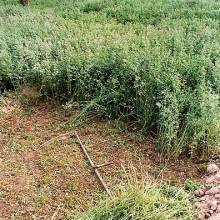
44:25 - Getting to the Root of Rhizobia to Improve Agricultural Yields
Getting to the Root of Rhizobia to Improve Agricultural Yields
with Rachel Roberts, University of Reading
Meera Senthilingam has been to the Chelsea Flower Show in London where she met the University of Reading's Microbiologist Rachel Roberts who's looking at ways to use nitrogen fixing soil bacteria called Rhizobia to improve crop yields...
Rachel - Nitrogen is a fundamental building block for plants. It's the centre of proteins which means that in order for a plant to grow, it needs nitrogen. It also needs carbon. Carbon is a bit more freely available in the soil. Nitrogen is a very growth limiting factor for plants. 79% of the atmosphere is made up of nitrogen, N2, which is a triple bond, it's very firmly bound to each other, but your average plant can't access this source of nitrogen. Legumes on the other hand are able to form a relationship with symbiotic bacteria called Rhizobia and the Rhizobia are able to take this nitrogen out of the air and make it into a plant available form which the legumes can then take up.
Meera - So when you say legumes, this is plants like peas and so on, and beans.
Rachel - There's peas, beans, sweat peas in your garden are also legumes. Then there's things like clovers, vetches, birdsfood trefoil, lots of different legumes that you'll find in any kind of grassland habitat.
Meera - What is this relationship? So how are these bacteria useful to the plant and how do they provide it with nitrogen?
Rachel - The Rhizobia fix the nitrogen as ammonia and through a series of conversions in the soil, it's made into plant available nitrates.
Meera - The use of say, legumes in say, a crop environment or a farming environment should hopefully reduce the need for nitrogen fertilisers.
Rachel - Yeah, that's right. In a year, a farmer will use about 200 kilograms of nitrogen per hectare per year, and if you've grown legumes in that soil you can save 10s of kilograms. So it's not going to replace it completely, but it is able to provide a good amount of nitrogen.
Meera - So you've actually got some legumes here. So what plant is this? 
Rachel - We've got a pea plant here and we've got its roots out on display so that you can see all the little root nodules on the roots. We've got quite big root nodules and they're nice and pink, which means they're fixing nitrogen at the moment.
Meera - Looking at these, there are kind of like strings coming out of the soil, but on there, there are these very clear round lumps.
Rachel - In each of those nodules, there'll be millions and millions of Rhizobia bacteria, but it's not all bacteria, there's plant cells in there as well. Once they're inside the plant, once they're inside the root nodule, they differentiate into these bacteroid cells, and they're the ones who actually fix the nitrogen. But once they've turned into bacteroides, there's no going back. They can't turn back into free-living bacteria.
Meera - Just next to this here, you've got an agar plate which has got Rhizobia on it too, but this essentially looks like just a pink slime.
Rachel - Yeah, that's right. It's very slimy. It's only pink because I've got dye in the agar which helps me to differentiate between Rhizobia and other strains of bacteria. The sliminess, which is another thing that helps me tell if it's Rhizobia, is because of these polysaccharides that the Rhizobia produce, I just then really call it goo. The goo helps them to move through the soil, to stick to the plant roots, and when it's left behind, it helps to increase soil structure, it helps to stick soil aggregates together.
Meera - So, when a legume or a plant that kind of works with these bacteria is planted, these bacteria actively kind of search and go to the root. So, although they're giving nitrates to the plant, these bacteria actually need the plant.
Rachel - They do. They can survive in the soil on their own, but sometimes food can be a bit hard to come by and soil, it's very complex. There's millions and millions of bacteria, and they're all competing with each other, so if a Rhizobia can find a legume that it's compatible with it, it's got a sneaky out from that hard lifestyle, it can go and get a nice cushy lifestyle if it can find a legume root, form a relationship with it, and get a steady supply of carbon.
Meera - This is a pea plant you've got here, but your work focuses in on a very particular type of nitrogen fixing plant.
Rachel - Yes, that's right. I work with Lucerne, which is a more agricultural plant, you probably wouldn't grow it in your garden, but if you're a farmer and you want to grow a legume, it's brilliant because it's very, very drought tolerant. It can have roots that can be metres deep. It can access water and nutrients from way down in the soil profile. It also provides a very high quality feed fodder. It's very good for cattle and for horses.
Meera - So farmers are already kind of using it and know about it?
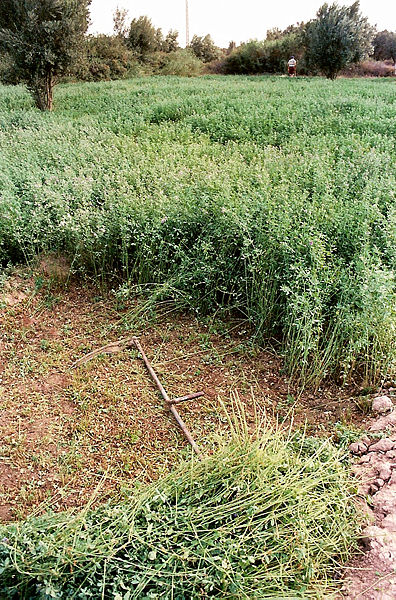 Rachel - It's been grown in this country on and off for about the last 300 years, farmers have been aware of it for a long time. It comes in and out of fashion because it's so drought tolerant. So when the weather dries up a bit, it gets used more. But the only problem is that this Lucerne plant originated in the Middle-East and that means that the Rhizobia that it likes aren't necessarily in England. So, we need to make sure that when it's planted, it has the right Rhizobia, so it can fix nitrogen.
Rachel - It's been grown in this country on and off for about the last 300 years, farmers have been aware of it for a long time. It comes in and out of fashion because it's so drought tolerant. So when the weather dries up a bit, it gets used more. But the only problem is that this Lucerne plant originated in the Middle-East and that means that the Rhizobia that it likes aren't necessarily in England. So, we need to make sure that when it's planted, it has the right Rhizobia, so it can fix nitrogen.
Meera - Your project now is to identify different strains of this Rhizobium that are helping it to grow outside of its native region?
Rachel - Yeah, that's correct. I'm hoping to find different strains that will be subtly different and those subtle differences will be what enable it to survive in a different habitat.
Meera - And how do you find this out? So how do you decipher what bacteria are going to work where?
Rachel - So what I've been doing is I've been collecting soil from various farm sites and then I grow up these legumes, add some of the soil to catch the Rhizobia out of the soil, into a root nodule on a plant, and then I take that root nodule, squish it, placed it up so it goes all goopy on agar, and then I try and find out what it is using genetic techniques.
Meera - So what stage are you at with this now? Do you have some strains that you've identified?
Rachel - At the moment, I have a freezer-full of Rhizobia strains that I've isolated from plants that I've grown. So, I know that they're strains that work with Lucerne. The next stage will be to find out how they're differing.
Meera - And what's the kind of long term aim with this really? Is it to improve say, crop yields in the future?
Rachel - My hope would be that say, you've got a farmer who thinks, "My land is getting dry at times", I'd quite like to grow a legume that is going to be stable under drought conditions, but I don't live in an area that has really grown Lucerne before I want to be able to matchmake the Rhizobia that they need with this soil that they have, and find a useful strain that will help Lucerne grow there.
Meera - So, it's really just matching the bacteria to the plant and to the setting, all in one go and will it just be as simple as knowing the soil type and therefore adding the right bacteria, the right Rhizobia, to it?
Rachel - If a farmer knows what their soil type is like, it will hopefully just be a case of matching that soil type to the right strain, adding it as an inoculum to the seeds as you drill the seed into the soil. Then as the plant grows, we'll be able to form a relationship with that Rhizobia and get on and fix some nitrogen.
Meera - And I guess just lastly really, why do we want to grow this so much? Is it say, so much more useful than any other potential legumes?
Rachel - Well, the real benefit to it is that it is so drought tolerant. With climate instability, it would provide a bit more reliability of fixing nitrogen. So you've grown your standard clover mix that might not cope with the heat and the drought whereas Lucerne would.
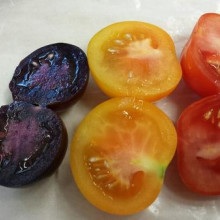
Is the taste of a Tomato affected by what it's been grown in?
We put this question to Harry Klee...
Harry - Oh yeah, soil makes a huge difference. Most of the commercial tomatoes are actually grown in greenhouse as hydroponically so they don't even have any soil and it does impact it. Wine growers have known this. Wine grape growers rather have known this for years.
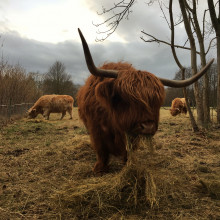
Are we exposed to antibiotics in animal meat?
Paul - A lot of antibiotics are heat-labile, so they're destroyed by the cooking process.
But often now there's a lot more regulation in terms of using antibiotics and in veterinary medicines, so there's no overlap with human antibiotics or as little as possible.
Chris - What about the implication of using antibiotics in terms of, it's not just this country, but other countries often put antibiotics into their animals? What are the implications for resistance and the spread of resistant organisms into humans because of that practice?
Paul - There is a lot of evidence to suggest that some of the antibiotic-resistant Staphylococci acquired their resistance mechanisms from related organisms that were found in cattle, possibly due to the use of antibiotics in those animals. However, there's been a lot tighter regulation across the world now, as people realise that this was a possible outcome.
Plants release defensive chemicals when attacked by insects and slugs, and things. Are any of these ...?
Harry - Yes, definitely. The classic ones are the brassicas. Things like broccoli and onions as well. A lot of the compounds that really give them their distinct flavours are actually defence compounds or breakdown products from defence compounds. So yeah, they have a huge impact on the quality of what you're eating.

54:57 - Do motorways create a microclimate?
Do motorways create a microclimate?
We posed this question to Guy Barter, Chief Horticultural Adviser at the Royal Horticultural Society.....
Guy - We think the plant in question is a native, despite its name Cochlearia danica or Danish scurvy grass. It's not actually a grass, but it's related to the cabbage family and known to be a halophyte, that's a plant that grows in the presence of some salt. It's well-known spread along roads, often at a remarkable rate per year where presumably the turbulence of passing vehicles help shift the seeds. It's a recent example of the many instances where human activity helps plants spread. Danish scurvy grass is an annual that thrives on well-drained but not too dry sandy soil. So run off from roads would suit it well as with the often rubble-like soil beside motorways. It tolerates coastal soils so it's well-adapted to high salt levels beside roads. The seeds ripen in late summer and disperse that season. The young leaves are actually edible cooked or raw, but apparently have a pungent flavour. It's rich in vitamin C, lack of which causes scurvy. However, the dust and the dirt beside roads would make me think twice before picking any.
Hannah - So, this salt-loving vitamin C rich grass traditionally eaten by scurvy threatened sailors is spreading along the major roads of central England. Rock salt, carved from underground mines, is sprinkled on the roads by gritters in the winter time and this creates conditions similar to the scurvy grasses normal saline coastal habitat. I spoke with Cambridge County Council and they go out between 30 and 40 times a year to deliver 200 tons of rock salt, each time, spreading it along 2,200 miles of roads across the county. That's 90 kilograms of salt per mile or about 10 teaspoons of salt per metre of road. But in the meanwhile, how is scurvy grass spreading across the length and breadth of the country so quickly? Well, the air turbulence of passing traffic causes a pocket of low pressure behind the car, sucking in the seeds, and dragging them along for large distances.
Related Content
- Previous The Tastiest Tomato
- Next Will my wife look like my mother-in-law?










Comments
Add a comment